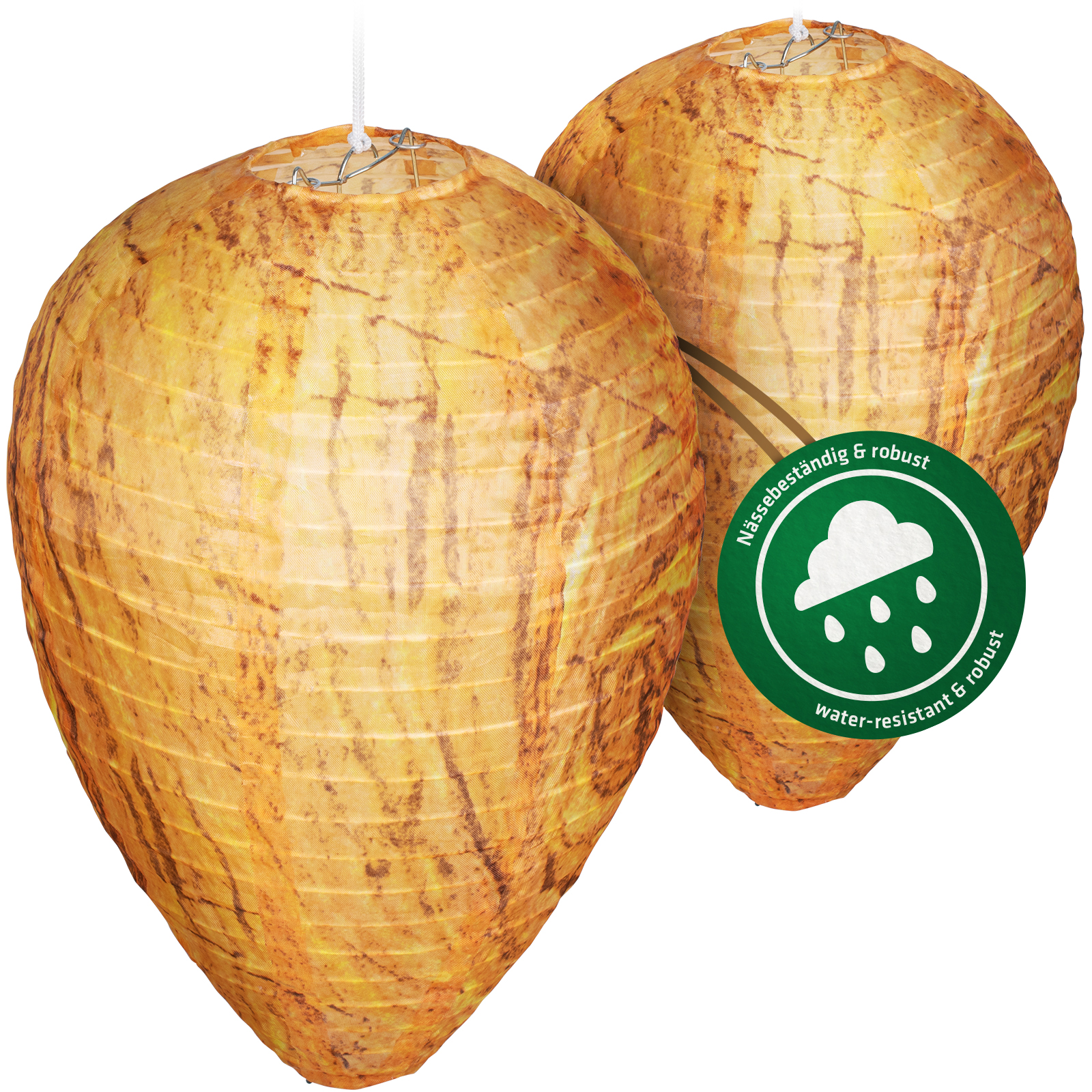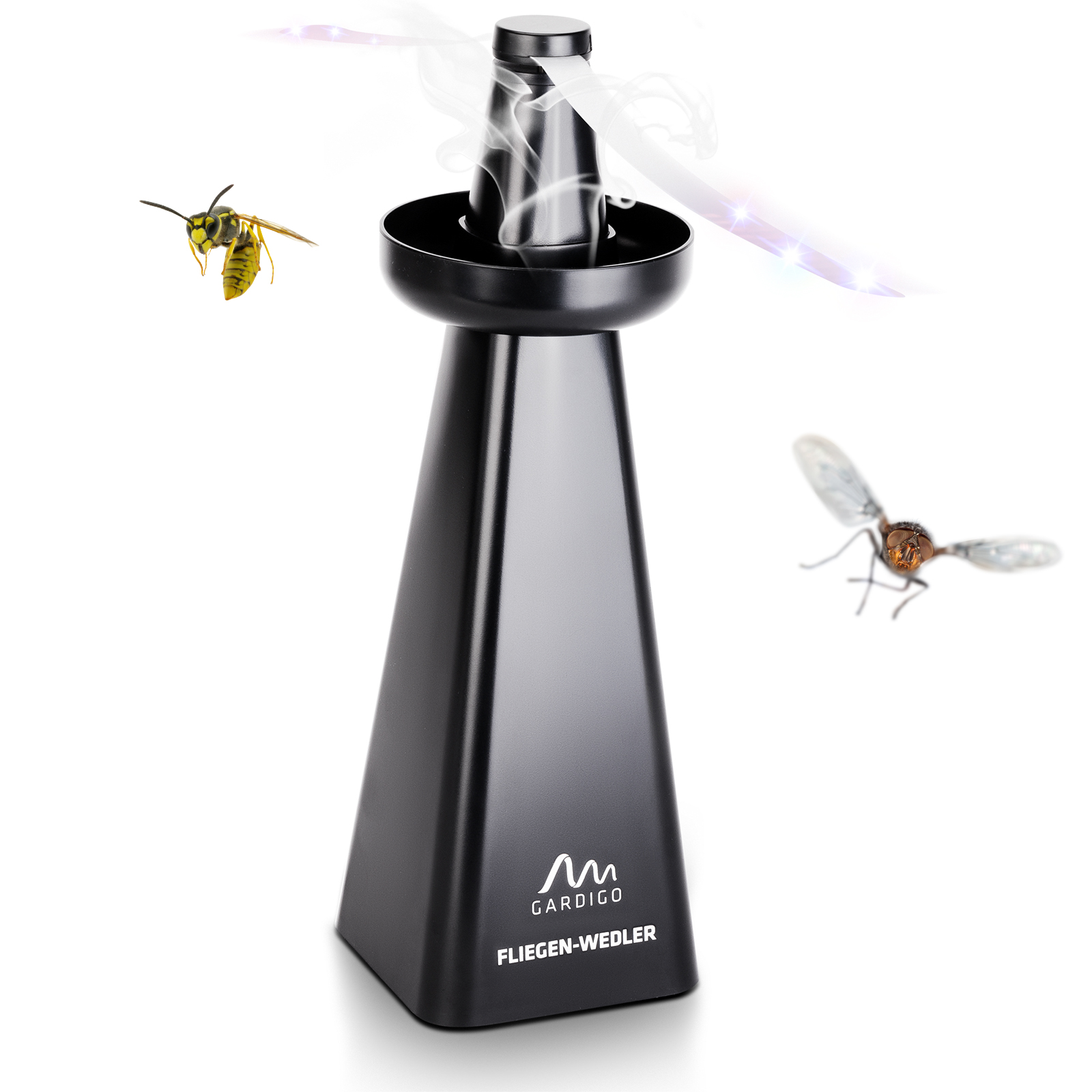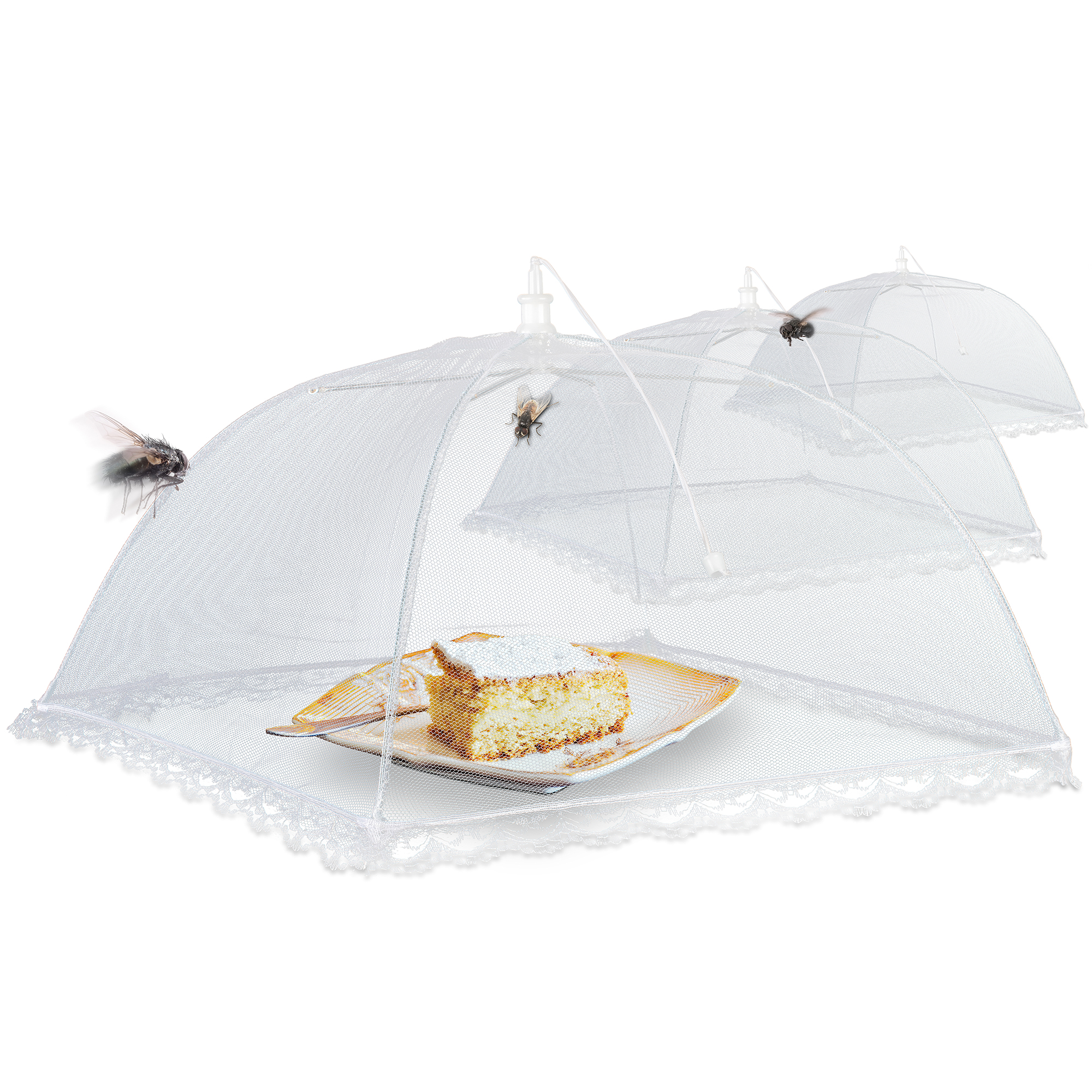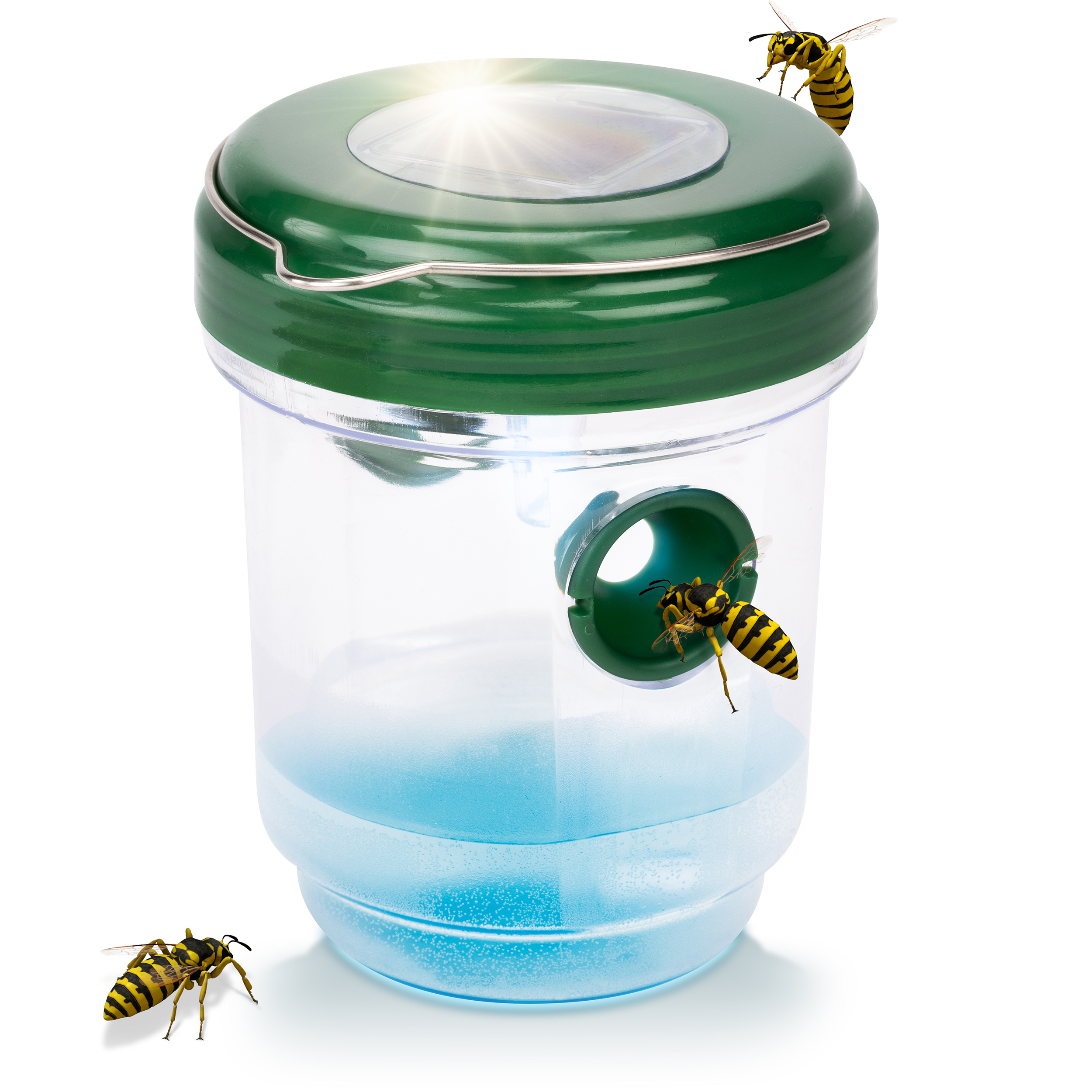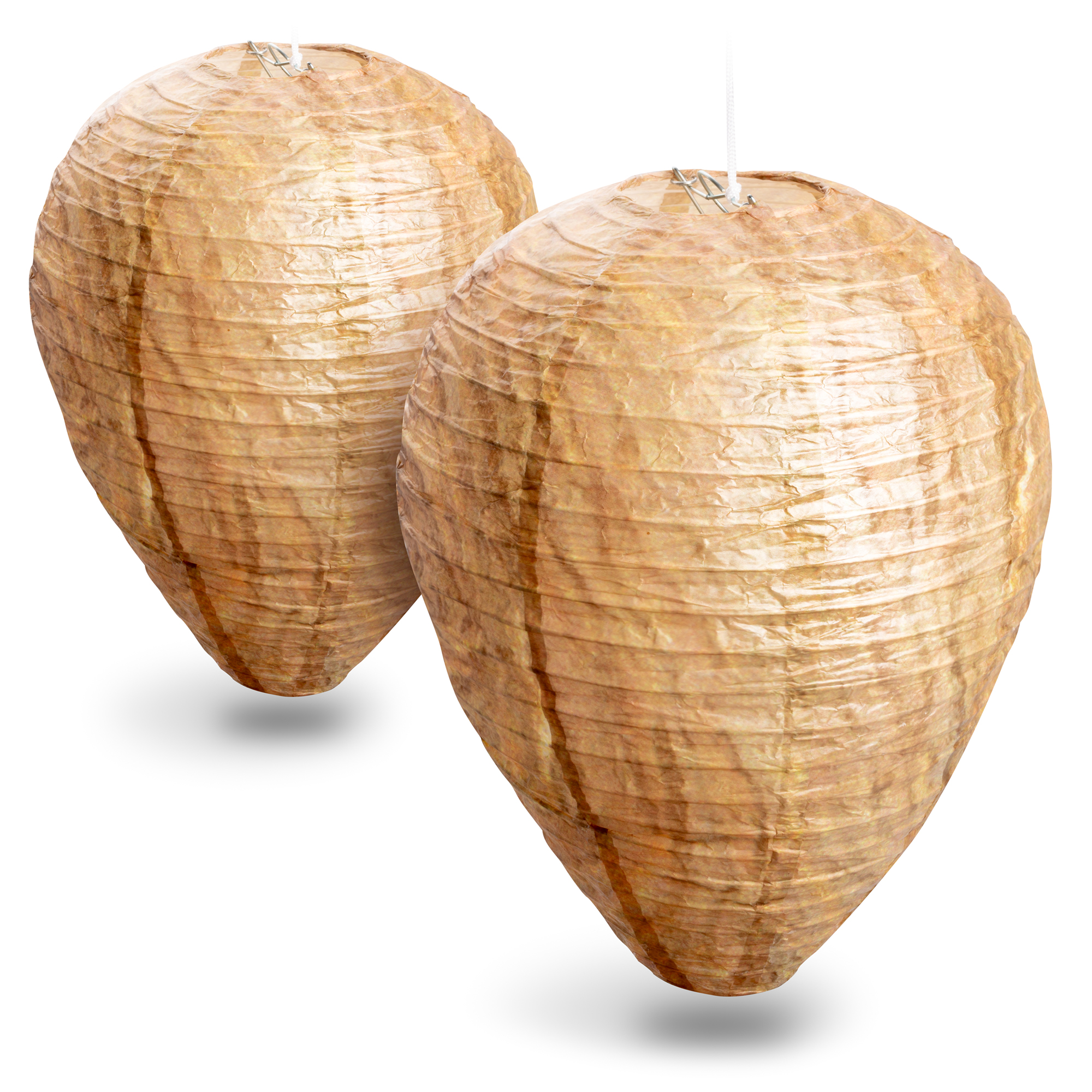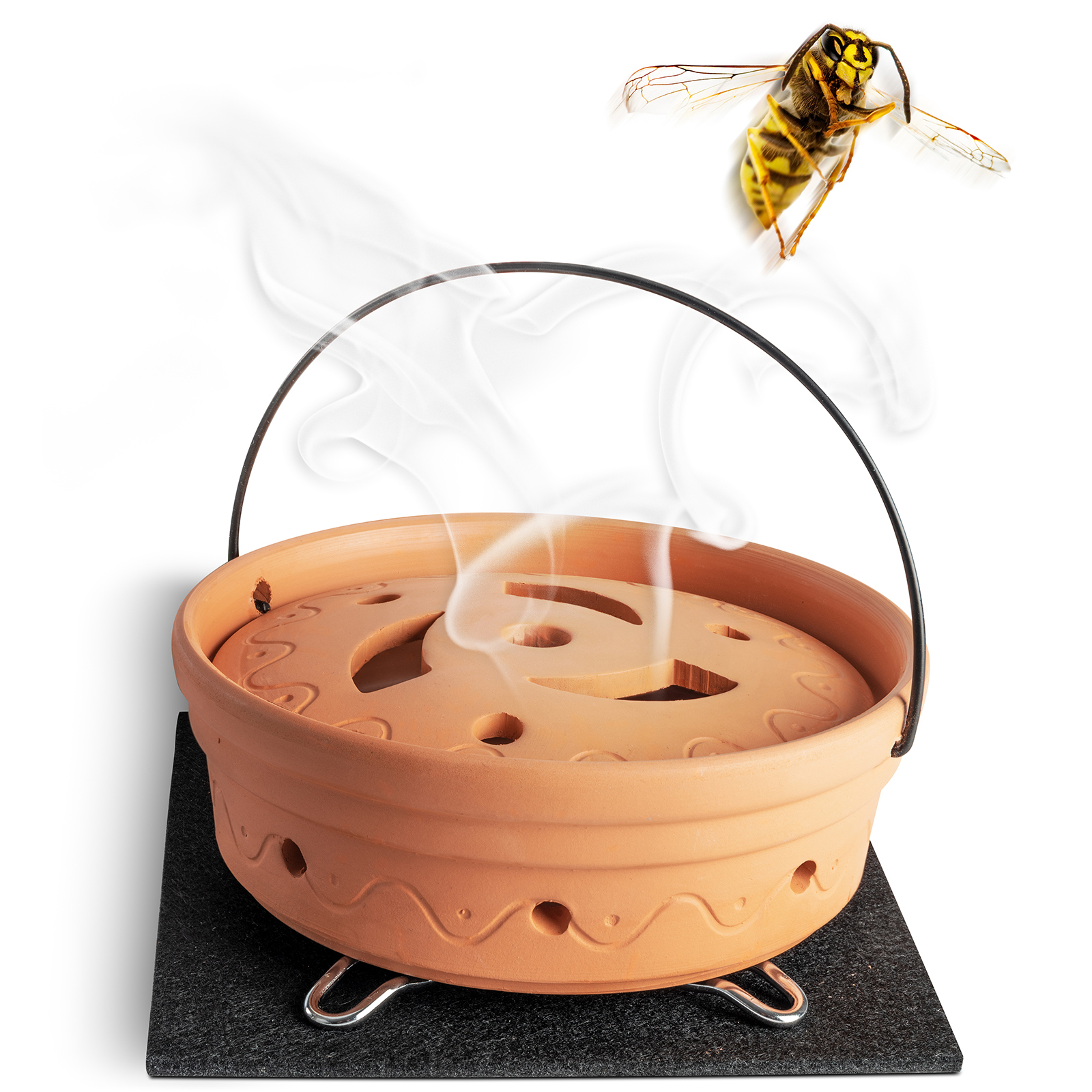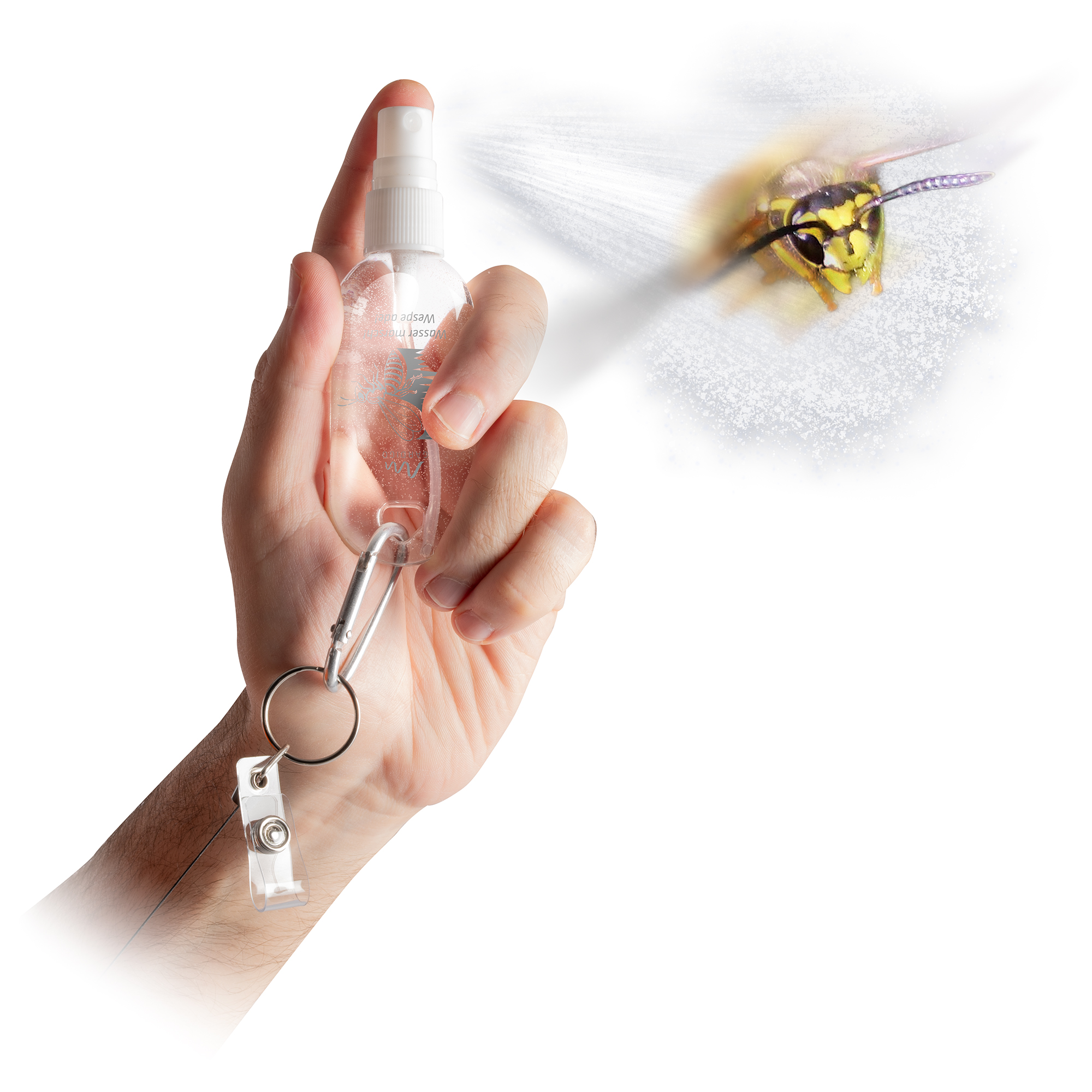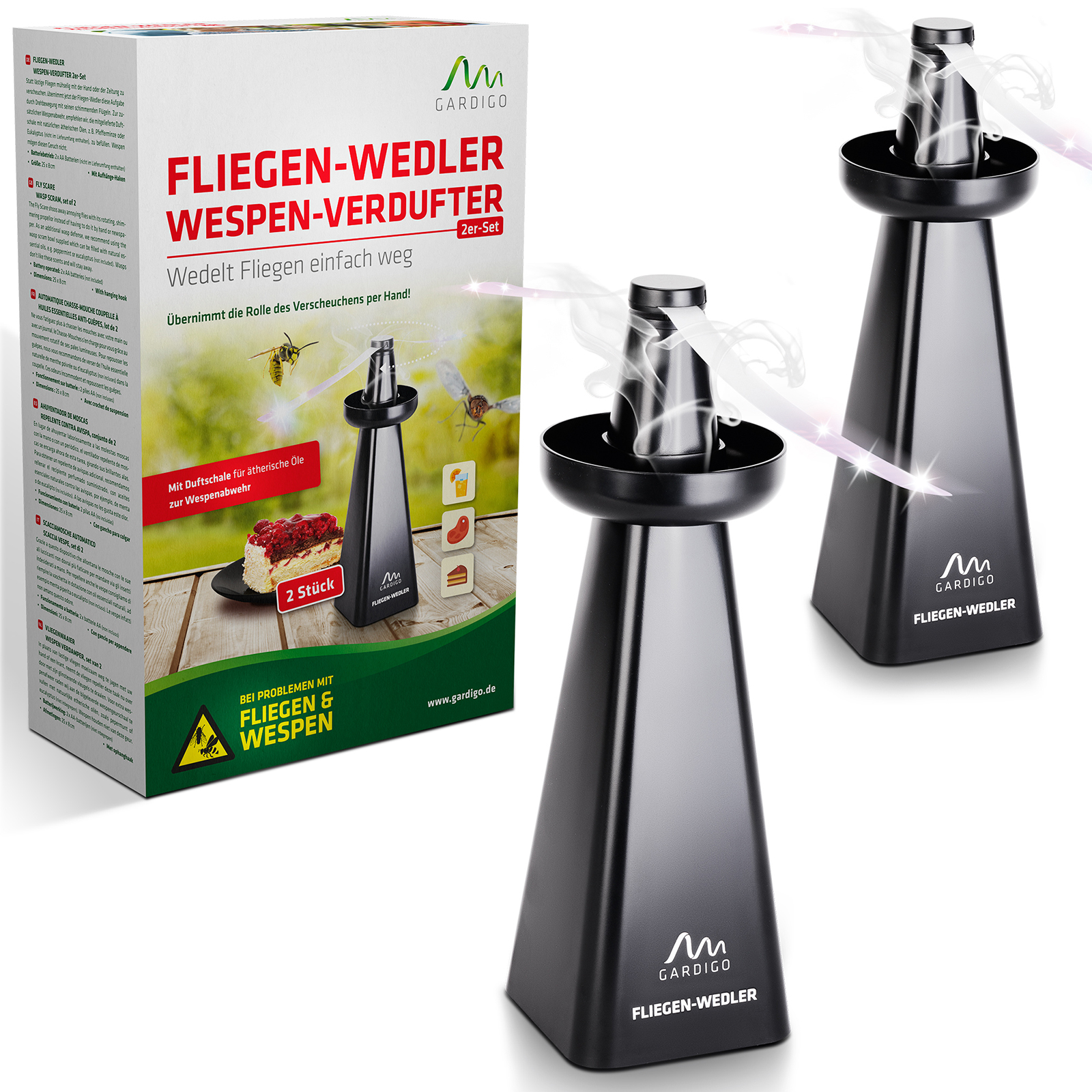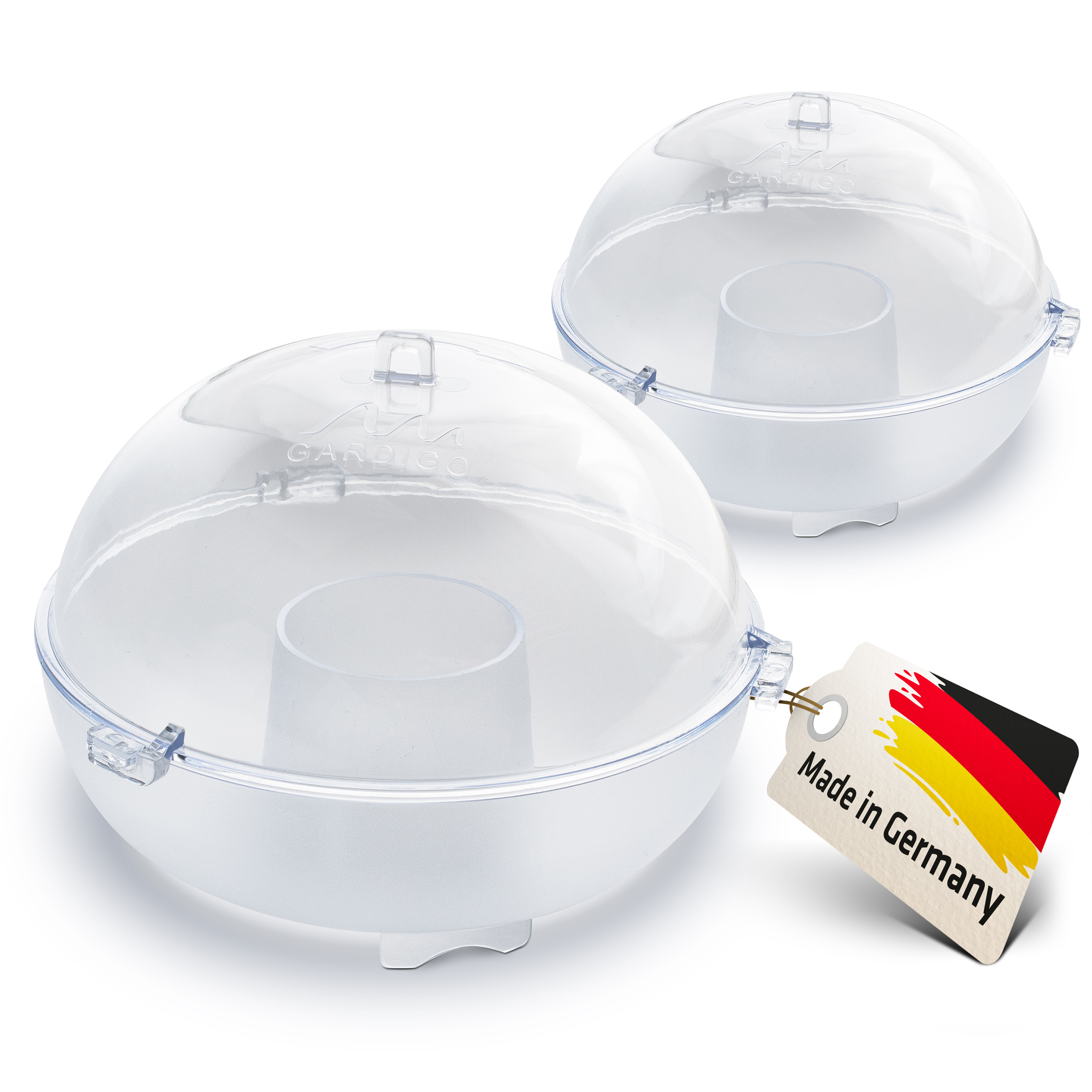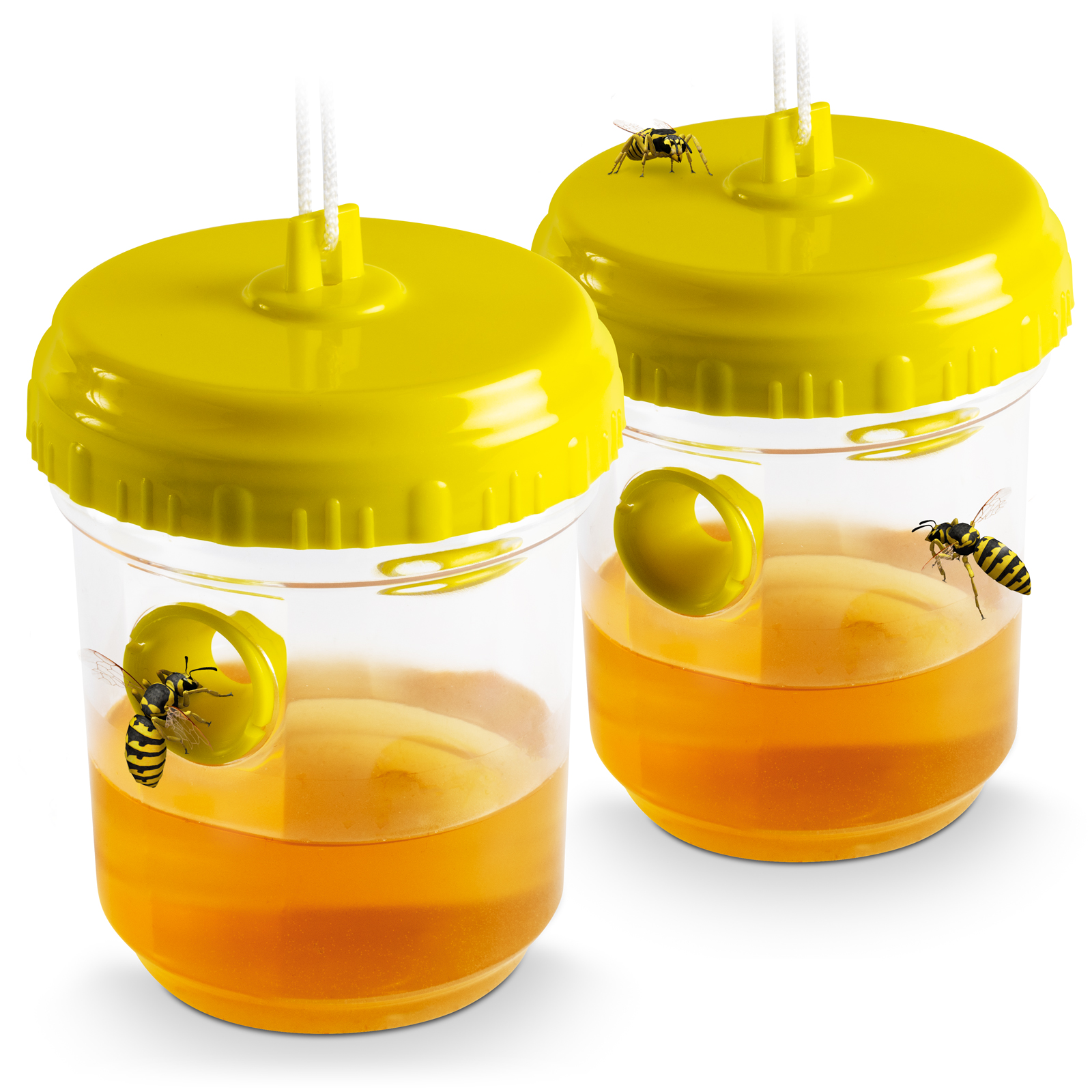Catching Wasps with Wasp Traps
Wasps can become a real nuisance, especially towards the end of summer. However, this is also the best time to catch them using baited traps, as they are actively searching for sugary food sources. That’s exactly what you offer them with a wasp trap. Wasp attractants are available commercially, or you can easily mix your own. Due to the low surface tension of the bait liquid, the insects drown once they land in it. A splash of vinegar helps keep bees and bumblebees away.
Repel wasps in an eco-friendly way without using chemicals – protect yourself and other animals!
Are Wasp Traps Banned?
Check your local legislation. In Germany, wasp traps aren’t banned, but–like any other animal–they are still protected by law and must not be caught or killed without good reason. If you’re shopping for wasp traps, there’s likely a good reason to use traps, though. They are generally used for hazard prevention. Having wasps in places where people eat is not only dangerous for those who suffer from allergies. Wasps can accidentally beswallowed, and stings inside the mouth or throat can cause swelling that blocks the airway — a life-threatening situation!
Catching Wasps Alive
If you want to play it safe, wasp traps can also be used as live traps. Instead of liquid bait, place small pieces of fruit such as grapes or plums inside. Later, the wasps can be released back into the wild.
Repelling Wasps with an Artificial Nest
To prevent wasps from building nests, you can hang artificial wasp nests. Wasps tend to avoid building near existing nests, so the decoys trick them into thinking the area is already claimed.
These fake nests are available in weather-resistant materials or paper. While paper may seem odd at first, it makes sense – wasps build their own nests using chewed wood fibers mixed with saliva, essentially creating a paper-like material. That’s why paper decoys appear particularly realistic to them.
Hang the paper nest in a dry, sheltered area accessible to wasps, such as in the attic, on the patio, or under a roof overhang – basically, anywhere wasps would naturally nest.
Artificial nests are usually put up in the spring before the wasps begin to build.
Home Remedies for Repelling Wasps
Certain scents have proven effective at repelling wasps. One popular home remedy in recent years is coffee smoke. Simply light dry, fresh coffee grounds and let them smolder in a fireproof dish. GARDIGO offers a special product for this purpose called the Wasp Diffuser Coffee.
Repelling Wasps with the Wasp Repellent Fan
Scents like vinegar and essential oils (eucalyptus is recommended) are also popular for keeping wasps away. These can be placed in the GARDIGO Wasp Diffuser dish, which fits on top of the GARDIGO Fly Fan. The rotating blades help spread the repellent scent. The products are also available as a set under the name “Wasp Fan.”
Preventing Wasp Stings
The following tips can help you avoid getting stung:
- Avoid fast, panicked movements – wasps perceive these as attacks.
- Don’t blow on wasps! Your breath contains carbon dioxide, which triggers alarm and aggression in wasps.
- Clean tables and faces after meals.
- Always cover glasses and drinks.
- Shower immediately after sports – human sweat attracts wasps.
- Always wear shoes – wasps often sit on flowers in the grass.
- Regularly remove fallen fruit from the ground.




